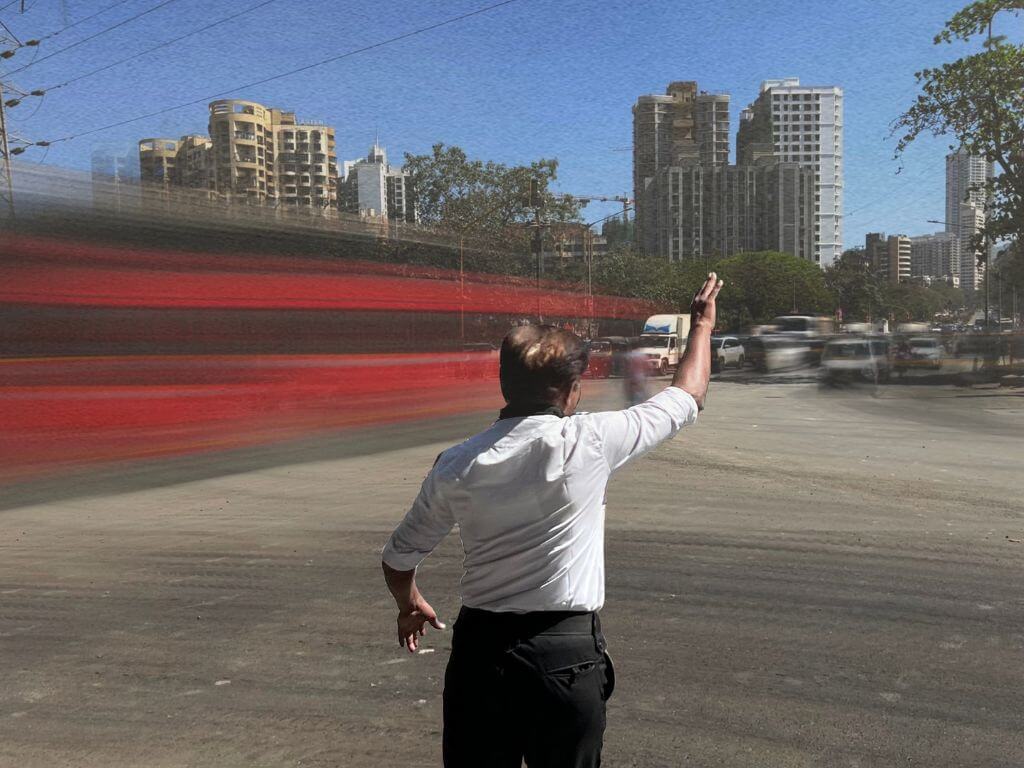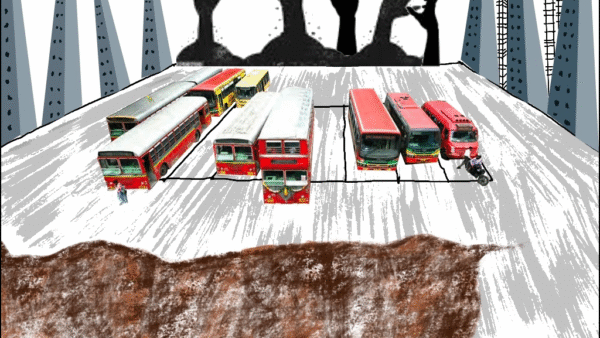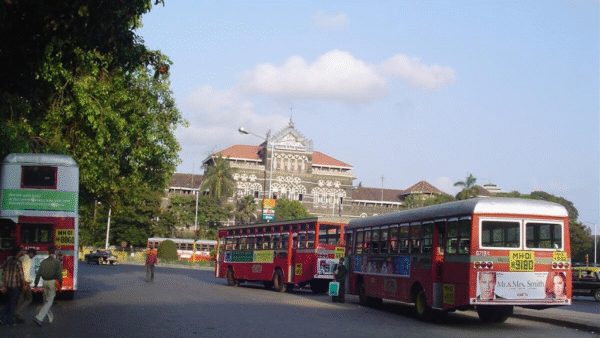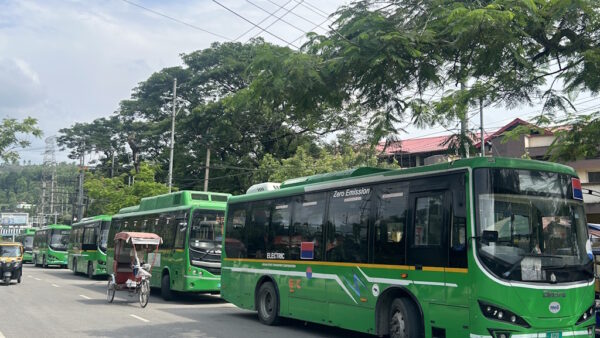Ajay Kumar Gupta, 52, drives an autorickshaw all day on the traffic-congested and fumes-filled streets of Mumbai’s suburbs for his living. A resident of Borivali, at the northern end of the city which also houses the National Park – a verdant oasis in the concretised city – Gupta has taken to wearing face masks all over again. This time around, the masks are not to keep the Covid-19 virus at bay but to offer himself some protection against the alarming levels of air pollution in the city.
Gupta, who has been driving around for nearly a decade, says the city’s air was never this badly polluted. He has developed a persistent cold and cough that does not completely go away. When he was very ill, he took a break from being out on the dusty and polluted streets, but he cannot afford to take long or frequent breaks from his livelihood. “I went to a doctor once who prescribed antibiotics and since then, whenever I fall ill, I have been buying the same medicines from the pharmacy myself,” he says.
The mask-wearing habit came after an epiphany. Gupta realised that after the Covid-19 lockdown was lifted and masks were made mandatory for all, his cold and cough was not as persistent as it used to be. So, as Mumbai’s air quality began to deteriorate, Gupta brought the mask back on. Through the day and despite the city’s infamous heat, he continues to wear a mask when he is out driving his rickshaw. “I am healthier now,” he grins.
Not everyone on Mumbai’s streets is as prudent as Gupta is about wearing masks though they are conscious of the air being “dirty” and “bad”. Of the city’s nearly 20 million, nearly half live in informal settlements without proper ventilation or means to combat polluted air at the ground level; besides, more than 60 per cent of the city’s workforce is in the informal sectors, living either in congested and poorly-equipped rooms or on the streets breathing in fumes and polluted air all the time.
Just as all parts of Mumbai are not equally affected by bad air – there are wide variations across the city on any given day – all people are also not equally impacted. Those who do not live in formal settlements with the luxury to close windows and install air purifiers, those who work long hours in the outdoors to earn a living are more susceptible to air pollution, high heat, and flash floods.
Traffic police personnel, construction labourers, taxi and autorickshaw drivers, public and private bus drivers, and street vendors bear the brunt of the poor air quality. Long hours outside, battling the grime and dust and the interminable pollution, they have no choice but to keep working. Not everyone believes that masks will offer them protection from bad air. Masks are a nuisance in Mumbai’s humid hot weather and end up making people breathless anyway. Mumbaikars have had little protection throughout the months of December-January-February when the Air Quality Index readings have been alarming.
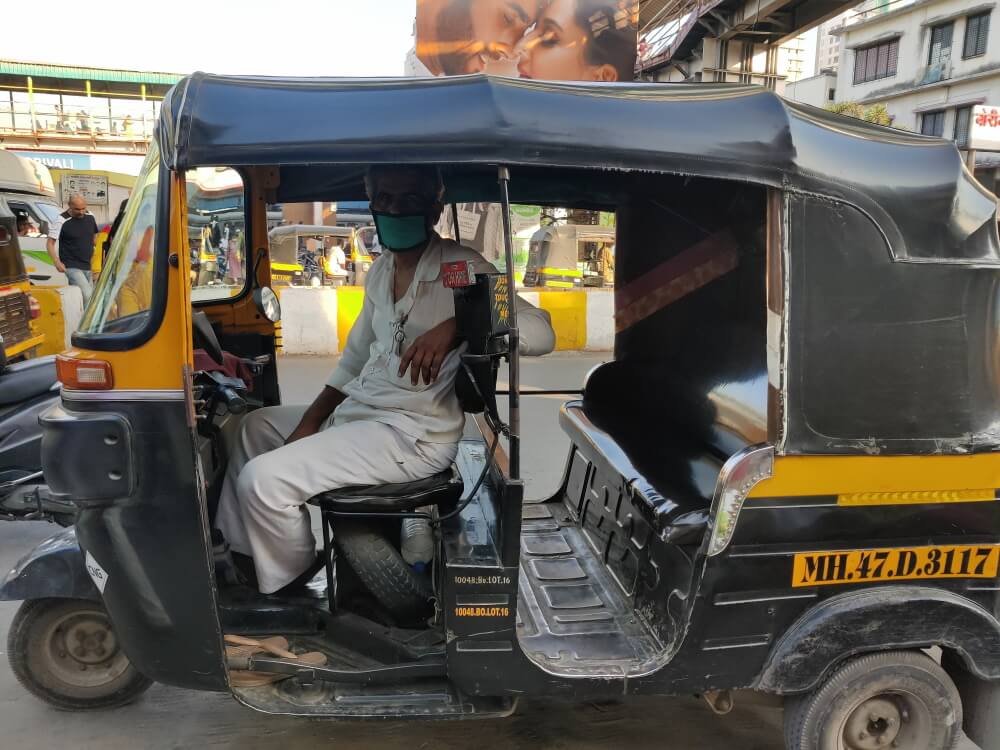
Photo: Jashvitha Dhagey
Hazardous February
The month of February would rank as a landmark month in Mumbai’s history. Air quality was so bad for so many days in the months that it consistently showed ‘poor’ (201-300) to ‘very poor’ (301-400) almost touching the ‘severe’ (401 to 500) category on the Air Quality Index. On February 13, Mumbai’s AQI surpassed that of India’s capital Delhi which is counted among the most polluted cities in the world.
On February 9, the AQI in the upmarket Bandra Kurla Complex hovered at 391 but the tony neighbourhood is serviced by people on its streets – drivers hanging around for their employers, taxi and rickshaw drivers plying or waiting for passengers, street vendors hawking food and drinks, and of course, the city’s ubiquitous police personnel who have no choice but to breathe in the polluted air complete with its dust levels and vehicular emissions.
That day, Mazgaon in south Mumbai recorded AQI of 315; Deonar which has one of Mumbai’s dumping grounds and a large swathe of slums showed AQI 342; and Andheri East which is a satellite business district and has a high population in informal work showed AQI 318. The first week of February was among the most polluted weeks in many years.
On the streets
Among those who spend their entire working day or night on the streets are the traffic police personnel. The government has not equipped them with masks or any other protective gear despite the consistently high AQIs in the past few months.
“We feel sick often, our throats feel scratchy, we have symptoms of cold but they go away in two to three days,” said a traffic policeman. Most we spoke to were reluctant to be identified by their names, given their employment. “We keep coughing because of the dust but there isn’t a place where there is no dust so it’s quite normal for us now,” said another cop.
At one of the most infamous traffic junctions in Mumbai, Saki Naka in Andheri East which has a perennial traffic congestion – with probably consistent ‘very poor’ AQI if it was measured at the local level – traffic wardens assist the policemen stationed there. “I have been here for months now,” says the warden who identified himself as Manohar. “When I go back home every night, I can feel the dust and grime on my tongue, on my clothes, in my hair, everywhere. I need to have a good bath but we don’t even have water in the slum.”
Does he or his colleagues take ill with all the pollution? “Yes, people are coughing all the time, or some have asthma, but these are all ailments that so many people have that they are very common now.” All the traffic constables we spoke to pointed out the ever-increasing number of vehicles.
Traffic wardens stationed outside the Chhatrapati Shivaji Maharaj Terminus (CSMT) said that by the time they get back home from work, they see a film of dust on their hands and faces. They brush it off, not realising the long-term health impact; all they know is that this job gives them the monthly income.
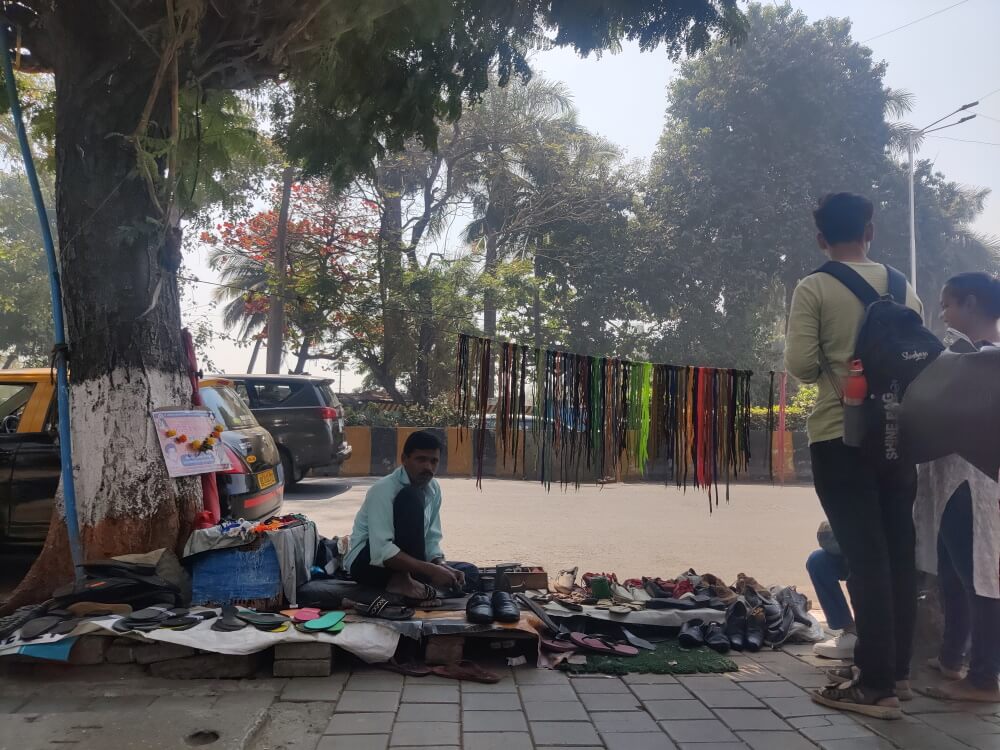
Photo: Jashvitha Dhagey
Dangerous ‘new normal’
Alarming and consistently high levels of bad air should have made people ill and angry. They are falling ill but are not always livid at the dust and smog. In fact, there is a surprising level of acceptance – a normalisation or a new normal – among many people we spoke to.
The responses ranged from “I have lived here since I was born; no amount of pollution affects me” to “This is normal, what can you do about it?” or “I fall sick, then I go back to my hometown to get better and come back to the city” to the most often said line, with a resigned shrug, “I do my job because I need to provide for my family, the air doesn’t matter”. They are blinded to almost everything in the city other than their work or job, their need to earn a livelihood.
When air pollution is not designated or even discussed in the public domain as a major public health hazard, people do not see it that way. This normalisation, except in a few thousands who complain or sign petitions to the Brihanmumbai Municipal Corporation, allows the authorities to get away too.
The link between exposure to air pollution and ill-health has been borne out in research papers. Short-term impacts include irritation to eyes, throat, and nose, and some respiratory infections such as pneumonia and bronchitis, while long-term air pollution impact involves chronic respiratory diseases, heart problems, lung cancer, and even damage to the brain, liver, kidneys, or nerves (Faheem et al., 2021). Meanwhile Prabhakaran et al. (2020) reported that both short and long-term exposure to air pollutants contributed to higher blood pressure and increased risk of incident hypertension.[1]
Bhupesh Rane, a 32-year-old autorickshaw driver, may not be aware of these studies but he takes the precaution he can: Wearing masks. Four years ago, he developed an allergy owing to smoke and pollution. “I saw two private doctors but the medicines didn’t work. I consulted a government doctor and the medicines he prescribed provided me some relief. However, the symptoms would come back from time to time,” he recounts between coughs.
Doctors attest
Dr Prerna Arya, a physician practising at Malabar Hill and Kandivali has been seeing an increase in cases of asthma, fibrosis, and chronic cough since January this year. She says that heart attacks and strokes are on the rise too. “School-going children too have been coming to me with chronic cough. Adults, who never had asthma and bronchitis, are now developing those problems. They feel better after taking medication, but come back to me with the same issues 10-15 days later,” she says.
She recalls giving nebulisation to four patients who had never required it earlier in their lives. Dr Arya also says that she has seen a sudden spike in the number of people having problems like bronchitis, an ailment she had not seen as much since the Covid-19 lockdown in 2020.
Dr Priyanka Kamble is a visiting doctor at Apex Medical Centre in Borivali which charges people as low as Rs 11 for consultation. In the past two months, she says, she has seen more patients with problems in the upper respiratory tract than earlier. Patients with problems such as cough, wheezing, fever and chest pains have been frequenting the health centre. Patients also complain of headaches, hypotension, sudden dizziness, and also digestive problems. “The phenomenon is alarming but this is what happens when the environment is consistently polluted,” she explains. Even the very young show these health issues, she adds.
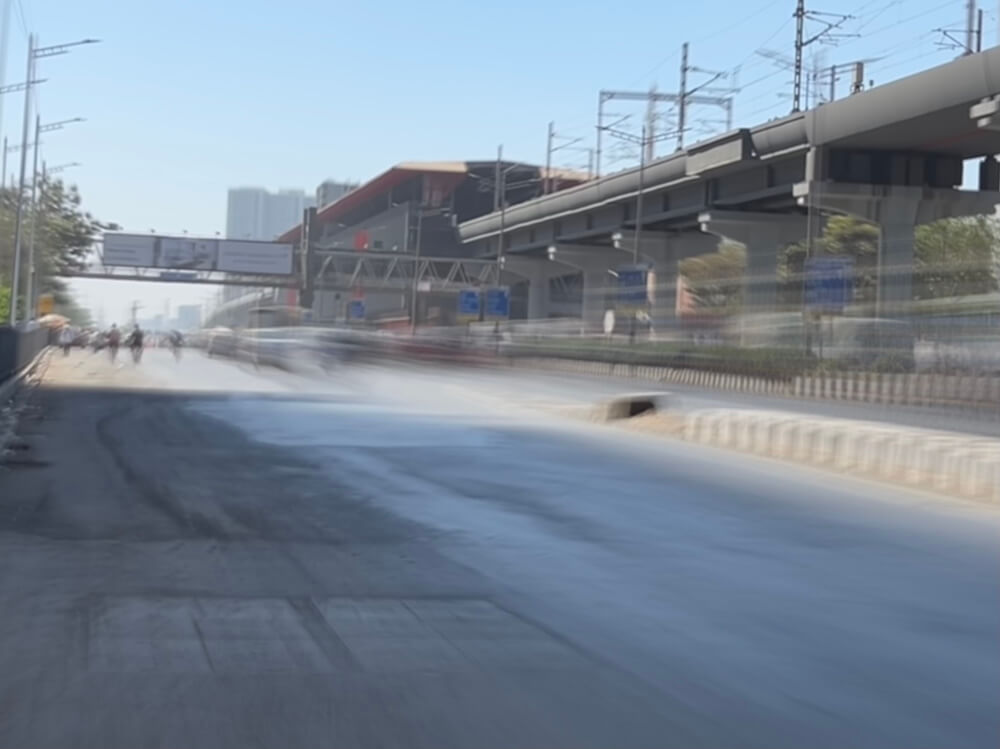
Photo: Maitreyee Rele
Mental health ignored
In recent years, people have begun to acknowledge the importance of mental health and the impact it has on people of all ages. Recent studies have connected depression and low-quality air.[2]
A 2019 study in Psychiatry Research looked at whether PM2.5 and nitrogen dioxide (NO2), were connected to mental health issues like anxiety, depression, attention-deficit hyperactivity disorder (ADHD), and conduct disorders. The study focused on 284 children who were part of a long-term study of twins born to nearly 1,200 families in the United Kingdom between 1994 and 1995.
Researchers found that “even relatively low PM2.5 and NO2 exposure in childhood may increase the risk of major depressive disorders and conduct disorders by age 18. The higher the pollutant concentration, the higher the possible risk of depression”.[3]
In India, the connection between mental health and air pollution is yet to be taken seriously, it is rarely made even by doctors.
Everyone’s fight?
Combating air pollution requires a number of people to be involved – from the government to various authorities and people. However, though people are at the end of the chain, they are called upon to take micro-level steps to deal with air pollution at individual level such as staying in on the highly polluted days which few can afford. They develop an indifference which, over time, takes the form of apathy. There is only so much that individuals can do; the responsibility rests with the government.
A lack of imagination in planning the city and no incentives to build a cleaner city, the unwillingness to address air pollution as a serious public health issue becomes the city’s template. Making ends meet or individual goals are disassociated from our life in the city; this distortion between the context of the city and the self causes a sense of alienation and apathy.[4]
“Is there a pollution control department? I never really thought about it,” says Divya Saibabu, a 24-year-old production designer when asked about authorities responsible for regulating pollution. That would be a common question among Mumbaikars.
Jashvitha Dhagey developed a deep interest in the way cities function, watching Mumbai at work. She holds a post-graduate diploma in Social Communications Media from Sophia Polytechnic. She loves to watch and chronicle the multiple interactions between people, between people and power, and society and media.
Maitreyee Rele graduated from School of Environment and Architecture (SEA) in 2021, where she mostly chose to work on projects on a larger urban scale. She is interested in studying people, their cultures and the society in which they unravel. An unfathomable love for films, art and every other form of storytelling make up the rest of the being.
Cover photo: Maitreyee Rele

